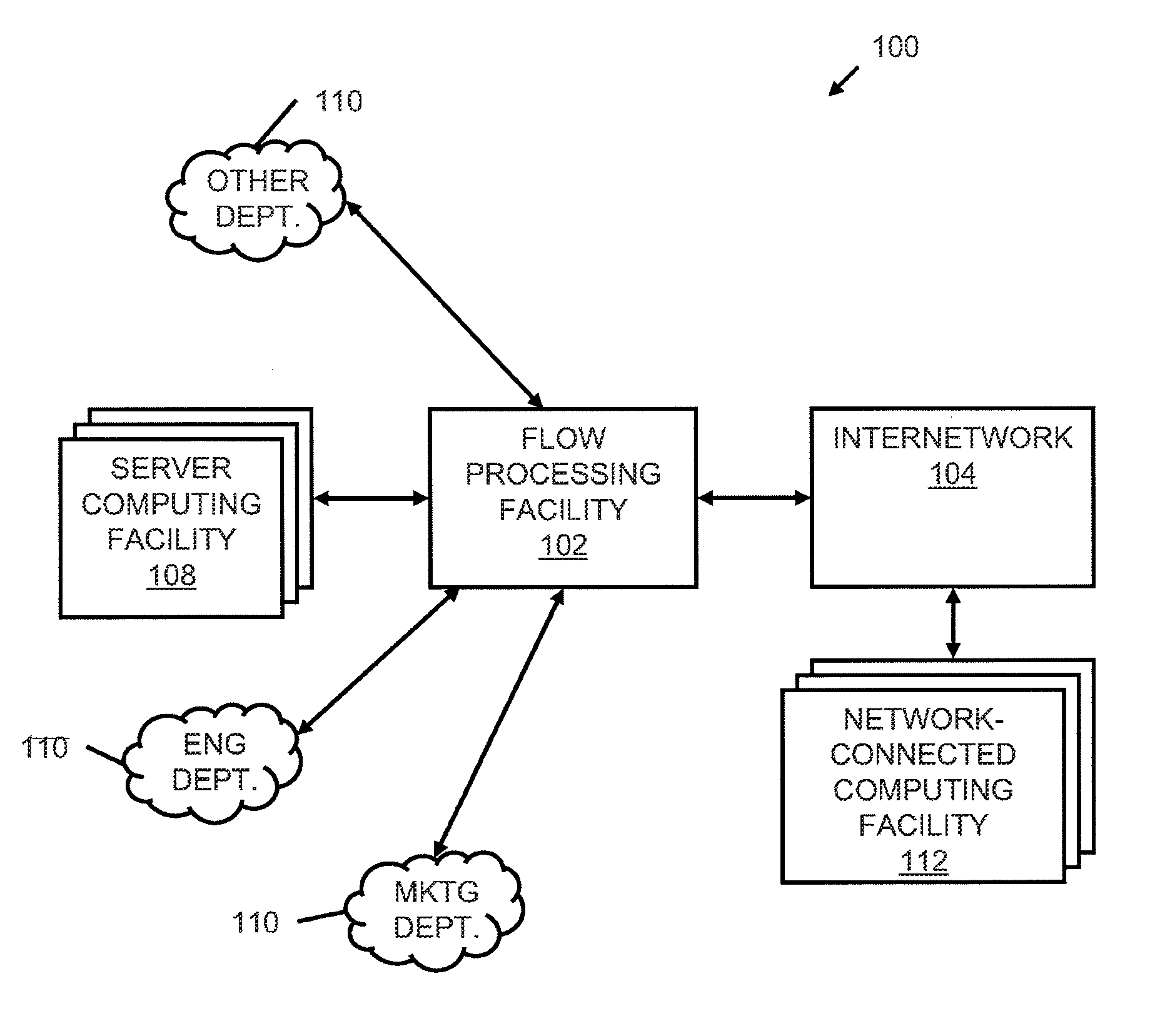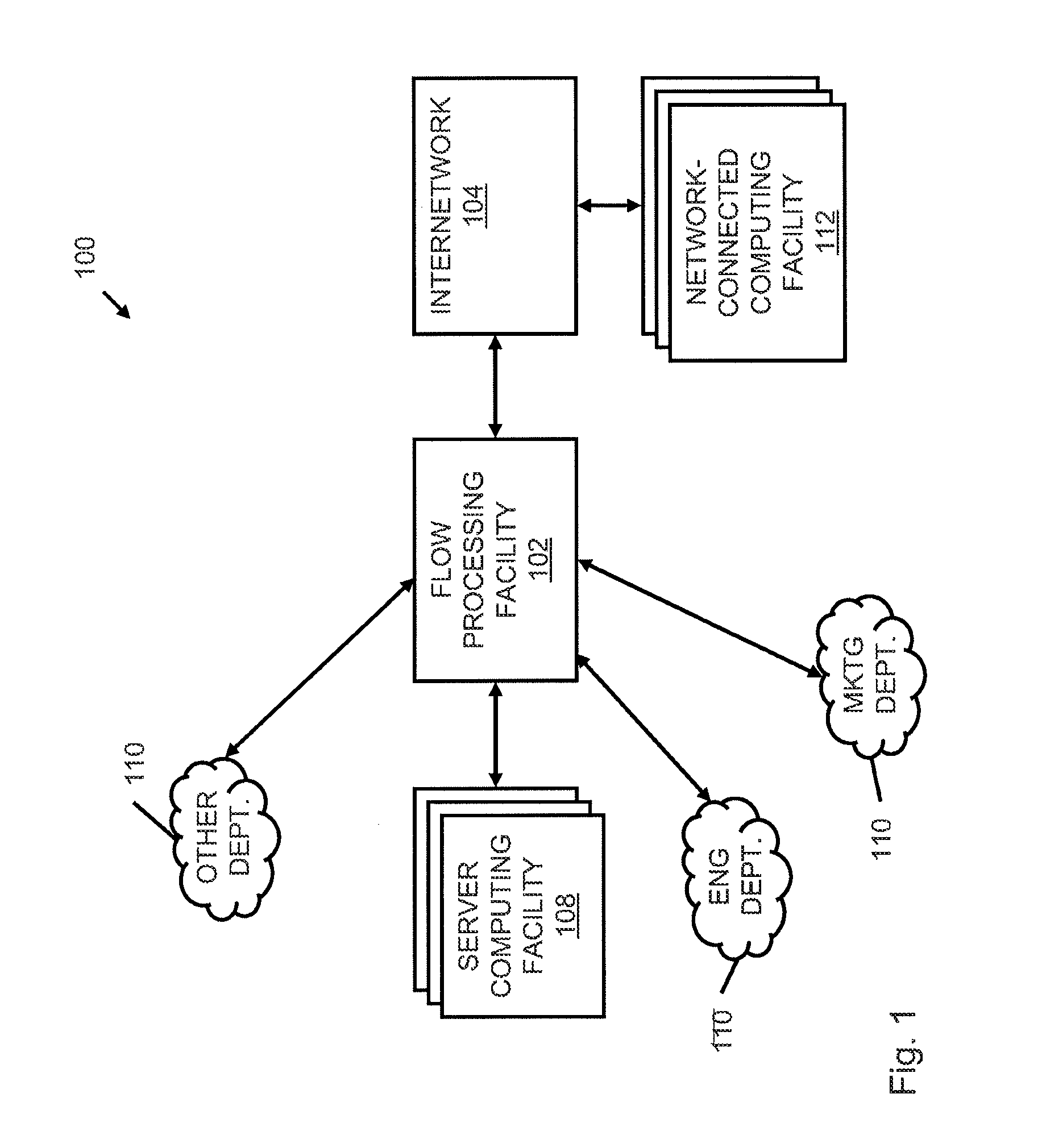Systems and Methods for Processing Data Flows
a data flow and data processing technology, applied in the field of computer security and protection, can solve the problems of increasing complexity, increasing the cost of operation, and reducing the security of the network, so as to facilitate detection of anomalies, and prevent anomalous data flow
- Summary
- Abstract
- Description
- Claims
- Application Information
AI Technical Summary
Benefits of technology
Problems solved by technology
Method used
Image
Examples
Embodiment Construction
[0122]An aspect of the present invention involves systems and methods for processing data flows. This data flow processing includes deploying software and / or hardware applications in a networked computing environment 100, wherein the applications operate within a network component referred to hereinafter as a flow processing facility 102. It will be appreciated that the flow processing facility 102 may indeed include a networking switch. However, it will also be appreciated that the flow processing facility 102 need not be a networking switch, but instead another type of network computing device. All such embodiments of the flow processing facility 102, many of which are described in detail hereinafter and others of which will be appreciated from the present disclosure, are intended to fall within the scope of the present invention.
[0123]Aspects of the present invention may relate to and / or be directed at and / or associated with one or more of the following network applications: fire...
PUM
 Login to View More
Login to View More Abstract
Description
Claims
Application Information
 Login to View More
Login to View More - R&D
- Intellectual Property
- Life Sciences
- Materials
- Tech Scout
- Unparalleled Data Quality
- Higher Quality Content
- 60% Fewer Hallucinations
Browse by: Latest US Patents, China's latest patents, Technical Efficacy Thesaurus, Application Domain, Technology Topic, Popular Technical Reports.
© 2025 PatSnap. All rights reserved.Legal|Privacy policy|Modern Slavery Act Transparency Statement|Sitemap|About US| Contact US: help@patsnap.com



